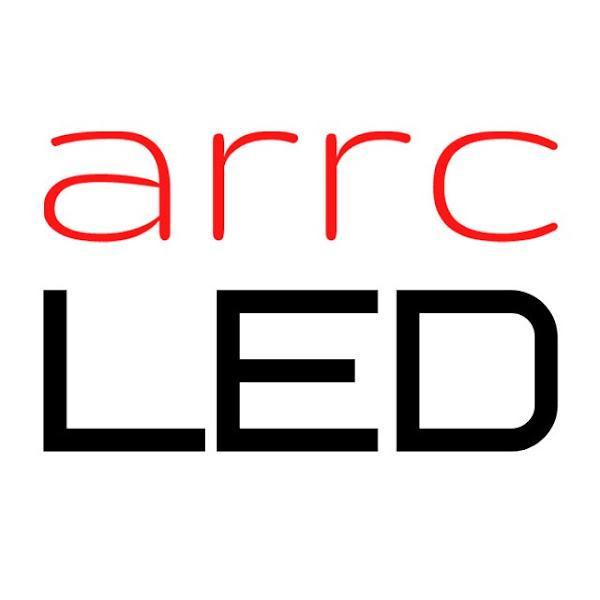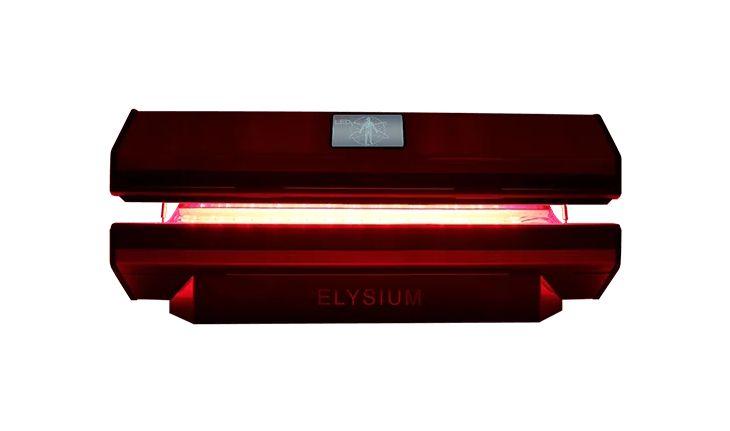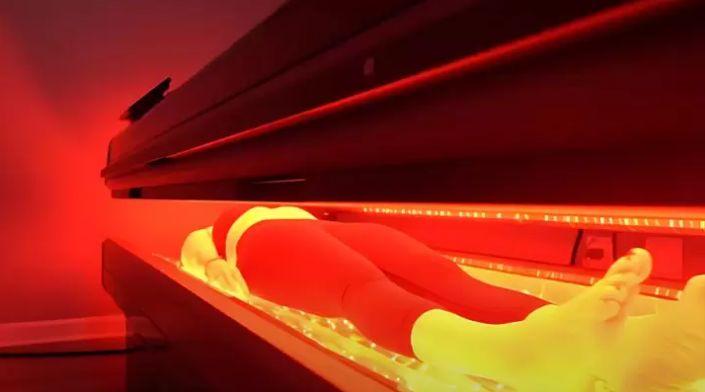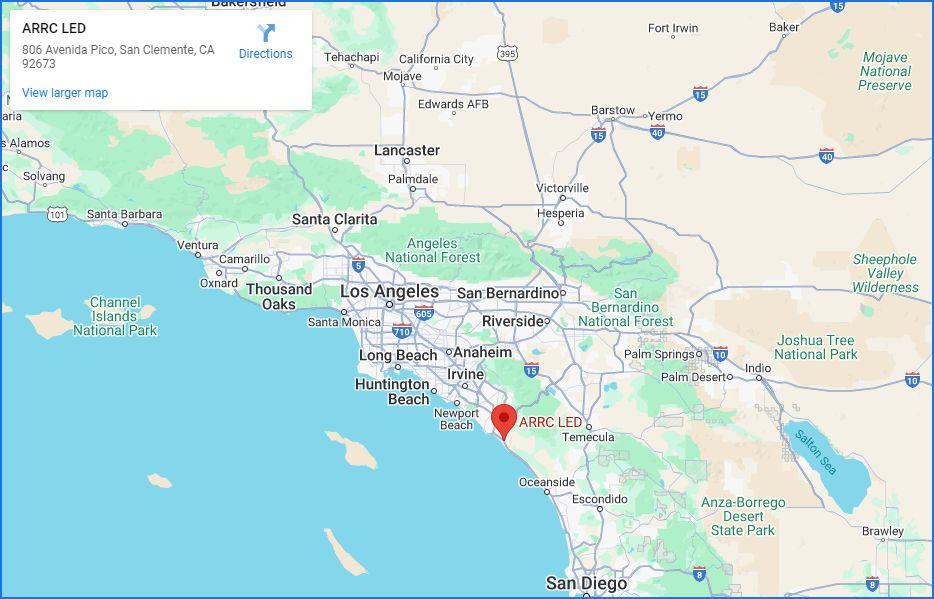

Frequently Asked Questions



Getting honest answers to important questions can be a challenge. Your time is valuable and it is important that what you invest into researching this topic is paid back. Our mission is to bring you honest and accurate answers to questions we see and expect in the field.
ARRC LED is an OEM of biotech devices, with our home base in Orange County California. We work factory direct, which means you are speaking with people who actually design and build the devices, not just salespeople. Our mission is to enhance the integrity of this industry with accurate and detailed messages. Our experience with LED’s reaches back to 2006. For more Red Light Therapy Frequently Asked Questions visit our FAQs Page
ARRC LED • Beyond Red Light Therapy Beds
The Elysium Device™
Do Red Light Therapy beds tan you?

Red Light Therapy Beds don’t tan or darken your skin they focus on Healing and Rejuvenation, not UV exposure.
Beyond Red Light Therapy.
Whether using skincare devices regularly or not, you’ve heard about
Photobiomodulation (PBM) Device such as Red Light Therapy Bed. You can find such devices in many tanning salons and aesthetic clinics.
Researchers suggest that RLT may help skin rejuvenation, anti-aging, anti-wrinkle, and pain management.
But one question remains:
Do Red Light Therapy beds tan you?
While some centers refer to them as tanning beds, they’re not.
What kind of light makes you tan?
Your body’s response to specific light does different things.
There are many types of light energy in the world; however, the specific light energy that produces a tan is Ultraviolet Light. UV light consists of 3 types, UVA, UVB, and UVC.
Research suggests that RLT beds can help with pain management, wound healing, acne, and some skin conditions.
Photobiomodulation speaks to how the energy from different wavelengths of light can modulate biological processes.
Generally, those wavelengths range from 528nm’s to 1100 nm. Changing the health of the cell, the benefits cascade down into the tissues, organs and systems. Everything gets better,
These wavelengths are outside of the UV range and don’t stimulate melanin production, which is what creates a tan.
Instead, the non-tanning PBMt wavelength penetrates deep into the body, stimulating ATP production for energy, reducing inflammation, improving circulation and detoxifying waste and free radicals.
UV light Beds
UV beds are the beds that make your skin darker. They emit UV light –both UVA (with a 320-400 nm wavelength) and UVB (with a 290-315 nm wavelength) but not UVC.
According to studies, UV beds produce much more UVA than UVB.
Both UVA and UVB light make you tan. UVA has an immediate effect, while UVB is known for delayed tanning, where the effects develop more slowly over several days.
UVB can also help to boost Vitamin D levels in the body for numerous health benefits.
Does red light therapy tighten loose skin?

Loose skin can appear anywhere on the body and is also the leading cause of fine lines and wrinkles.
The most common causes of loose skin are aging and weight loss.
One of the primary contributors to good skin condition is collagen development. Red light therapy has been shown to significantly increase collagen production – research suggests as much as 211%.
The skin naturally loses its natural elastin which tightens the skin. One of the larger benefits of PBMt for skin care is how it tightens the elastin layer.
If we can thicken and tighten skin then we can reduce the appearance of fine lines and wrinkles
Red light both increases collagen and tightens elastin. Green light has been shown in recent research to outperform red light for wound healing. Photobiomodulation therapy or red light therapy is a non-invasive and painless wellness treatment that uses red and near-infrared (NIR) light in order to stimulate mitochondria in the cells.
When the cells are low on energy, they are not producing enough “power” and are focused primarily on survival. This condition is named “Mitochondrial dysfunction” and can have many causes, including chronic inflammation or oxidative stress. According to the newest studies, Red Light Therapy may potentially reverse this dysfunction and restore cells’ energy production.
Some of the most recognizable reasons for loose skin are:
● Weight loss
● Pregnancy
● Aging
● Sun exposure
● Smoking
How does Red Light Therapy tighten loose skin?
Researchers suggest that when red light shines onto the skin, it absorbs into the tissues, interacting with the light-sensitive chromophores in the cell.
This interaction stimulates mitochondria to produce adenosine triphosphate (ATP). A boost in ATP helps cells perform their normal specialized functions and repair and regenerate at full capacity.
While all body benefits from improved cellular energy production, these cells are exceptionally responsive to red light:
Fibroblasts – This type of cell contributes to the formation of connective tissue, a fibrous cellular material that supports and connects other tissues or organs in the body.
Epithelial cells – Those are the cells that cover the inside and outside of the surfaces of the body. They form the epithelial tissue surrounding the different body surfaces, body cavities, and organs.
Benefits of Red Light Therapy for loose skin
According to the research, Red Light Therapy may be able to tighten loose skin by benefiting the skin cells that produce collagen and elastin.
One of the crucial keys to restoring firmness and elasticity in the skin is stimulating healthy collagen production that will support the skin. Skin wellness also relies on good blood and lymph circulation.
Lymph removes waste from the skin, and blood flow brings nutrients to the skin, reducing oxidative stress and the presence of cell-damaging pathogens.
Endothelial cells comprise the outer layer of capillaries and are present in the cardiovascular and lymphatic systems. A 2017 study, in particular, found that red light therapy promotes the growth of endothelial cells to improve circulation.
PBMt helps in all of the above conditions. It generates a systemic shift in the cells which affects nearly every tissue organ and system in the body. Affecting the health of the liver affects the homeostasis of the entire body. Everything gets better, including the skin.
Research
In a study about the possible effects of RLT on tightening loose skin, Ten female patients, with an average age of 56.5 years, received two treatments one month apart with an infrared device. The individuals were examined and photographed before treatment and at 1 and 3 months post-treatment. Three treatment-independent evaluators compared the photographs and graded them on a standardized scale applied to seven regions subdividing the face and neck. The patients also rated their results. After evaluating the pictures, the difference in pretreatment and post-treatment scores was expressed as a percentage.
The most significant tightening was achieved over the malar region, the upper neck, and the body of the mandible. In these areas, the average tightening was 10%, 10%, and 12%, respectively. The patients reported a 32% improvement in the appearance of their cheeks and a 20% visible improvement in their necks. Overall, they were pleased with the result of this non-surgical skin tightening method.
The most significant tightening was achieved over the malar region, the upper neck, and the body of the mandible. In these areas, the average tightening was 10%, 10%, and 12%, respectively.
The patients reported a 32% improvement in the appearance of their cheeks and a 20% visible improvement in their necks. Overall, they were pleased with the result of this non-surgical skin tightening method.
Source Pubmed:
Facial skin tightening with an 1100-1800 nm infrared device
One hundred thirty-six volunteers participated in a randomized, controlled study. Of these volunteers, 113 subjects randomly assigned into four treatment groups were treated twice a week with either 611–650 or 570–850 nm polychromatic light and were compared with controls. Irradiances and treatment durations varied in all treatment groups. The collected data included blinded evaluations of clinical photography, ultrasonographic collagen density measurements, mechanical digital profilometry, and an assessment of patient satisfaction.
As a result, the treated subjects experienced improved skin complexion and feeling, profilometrically assessed skin roughness and ultrasonographically measured collagen density. The blinded clinical evaluation of photographs confirmed the improvement in intervention groups compared with the control. In conclusion, compared to controls, RLT has demonstrated efficacy and safety for skin rejuvenation and intradermal collagen increase.
Source Pubmed:
A Controlled Trial to Determine the Efficacy of Red and Near-Infrared Light Treatment in Patient Satisfaction, Reduction of Fine Lines, Wrinkles, Skin Roughness, and Intradermal Collagen Density Increase
How often should you do Red Light Therapy?
Red Light Therapy is dose dependent. One can easily overdose as well as underdose. Doing so will not necessarily hurt the user as the slide effects are minimal, but overdosing can actually reduce the benefits of the system.
More in light therapy is not better. Right is right. We don’t take the entire bottle of aspirin – we take two.
ARRC LED suggests 2 sessions per week with sessions targeting pain relief to be approximately twice as long as sessions targeting performance.
The answer to how much Red Light Therapy sessions are needed to achieve the desired results is complex and different for every patient. In every wellness center, you would be in the hands of professionals who will make you a therapy plan tailored to the individuality of each patient.
ARRC LED sees Photobiomodulation (PBM) as a life enhancing wellness and performance modality. In testing we are seeing increases in phase angle for users which is a biomarker for longevity and fragility. If we can increase phase angle we live longer, with less fragility and less diseases like cancer and diabetes. While many see PBMt as a treatment for an illness, we see PBMt as a pathway to a longer and better life.
You Feel Better, Think Better, Look Better and Perform Better.
That’s compelling.
How often should you do Red Light Therapy for skin care?
RLT is a new approach for people seeking non-thermal and pain-free skin care. Furthermore, researchers suggest that RLT increases microcirculation and vascular perfusion in the skin, alters platelet-derived growth factors, transforms growth factors, and inhibits apoptosis.
How
often should you do Red Light Therapy for skin rejuvenation?
Recently, LED light sources for non-thermal light-only treatment for skin photorejuvenation have increased. In one multicenter clinical trial, 90 patients received 8 Red Light Therapy treatments over four weeks.
The outcome of this study showed very favorable results, with over 90% of patients improving by at least one photoaging category and 65% of patients demonstrating global improvement in facial texture, fine lines, background erythema, and pigmentation. The results peaked at 4 to 6 months following completion of 8 treatments.
How often should you do Red Light Therapy to reduce wrinkles?
As a person’s skin ages, its cells divide more slowly, and the skin’s inner layer, called the dermis, begins to thin. That starts to undo the skin’s stretchiness and structure and loses its ability to hold on to moisture. It makes less oil and is slower to heal. That all contributes to the wrinkling process. Other things that cause wrinkles are:
● Smoking
● Skin type
● Heredity
● Sun exposure
● Repeated facial expressions
In a study about the possible positive effects of Red Light Therapy on wrinkles, each participant was assigned to one of four groups.
Group 5 was mainly recruited without randomization and served as the control.
Groups 1–4 were treated twice weekly, with 30 treatments starting in January. The data acquisition at baseline was completed after one month, and all volunteers finished treatment 30 in June.
Frequency of Red Light Therapy for Acne Treatment
Several studies suggested that Photobiomodulation (PBM) in the red to the near-infrared spectral range and non-thermal power alone or in combination with other treatment modalities may be an effective treatment for acne vulgaris.
One of these studies demonstrated a significant reduction in active acne lesions after 12 sessions twice weekly in conjunction with 2% topical clindamycin.
How Many Times a Week Should You
Do
Red Light Therapy for Weight Loss?
Red Light Therapy for weight loss is a new innovative technology that uses a special therapeutic light. According to research, this light can open up, penetrate fat cells, and liquefy the fat to make it easier to remove and burn as energy.
The therapy takes approximately 20 minutes, and when it comes to the number of sessions you need, this will depend on several factors, such as:
● Eating habits
● Desired result
● Exercise habits
● Body fat percentage
● Area of concern
A standard RLT treatment course takes approximately 12 sessions over four to six weeks.
After each session, you will probably have a fat loss of anywhere from half an inch to two and a half inches.
Contact Us
At ARRC LED we are incredibly responsive to every request and value your questions. We know that when we are talking about health, experience matters. Do you have questions about ARRC LED products, pricing, and technology for your business? Please call us and we will be happy to help. We want to make your ideas become a reality.
Get support
Looking for help with your devices or have questions about service? Please contact us, and we will be more than happy to support you.
Media Inquiries
We love working with journalists and enjoy sharing compelling stories. Please send us a note, and our PR and Communications Manager will be in touch. ARRC LED has proudly served clients with precision and excellence since 2015. Our owners include world champions, world leaders, Fortune 500 CEOs and doctors in the know. You’re in good
What do red light therapy beds do?
How
do Red Light Therapy
Beds Work?
Red Light Therapy beds are lined with light-emitting diodes (LEDs) that produce specific wavelengths of visible and near-infrared light.
Research suggests that the light penetrates deeply into the body. ARRC LED targets 3 absorption points or chromophores. The primary target for RLT or Photobiomodulation (PBM) is the energy centers of the cell the mitochondria. Mitochondria produce ATP which the cells use to energize the tissues, organs and systems.
Mitochondria get damaged by free radicals. Light knocks the free radicals that block the ‘assembly line’ that produces ATP, restarting the energy process.
That ATP energy accelerates the process of cell repair, resulting in skin that’s smoother, firmer, and less prone to acne, shingles, psoriasis, eczema and irregular pigmentation. It slows cell death, reduces inflammation, detoxifies waste and free radicals and improves circulation of blood, lymph and neurotransmitters.
What are the skin-related benefits of Red Light Therapy Beds?
A Red Light Therapy Bed can improve skin in several ways. And because they expose the entire body to low-level light, they’re especially beneficial for people whose skin concerns aren’t limited to the face.
Research suggests that red light therapy can accelerate wound healing, alleviate muscle soreness and reverse hair loss. Skin issues are often a sign of deeper issues that surface onto the skin. By healing the entire system, everything gets better.
We Feel Better, Think Better, Look Better and Perform Better
Skin-related benefits might include:
● Fights signs of aging
● Collagen
● Elastin
● Pigmentation
● Graying, thinning hair
● Reduces hyperpigmentation
● Acne
● Psoriasis
● Eczema
How safe are Red Light Therapy beds?
These devices are considered safe and have virtually no side effects. It’s recommended to wear eye protection but even the eyes benefit from red light therapy.
Contraindications include:
● Pregnancy
● Epilepsy
● Pacemaker
● Low blood pressure (monitor sessions)
● Photosensitive medications
● Cancer (we predict this will change)
How often can you use Red Light Therapy beds?
There is no established time for undergoing the treatment. Undergoing sessions 10–15 minutes in length 2-3 times per week is generally recommended when you’re first starting.
After several weeks, you can switch to weekly maintenance sessions.

Global Leader
ARRC LED light therapy beds are FDA Registered, built in a ISO 9001, 9100, 13548 and Itar compliant factory in California, USA.
ARRC LED light therapy beds are chosen by world leaders for themselves and their families.
They are in the training rooms of world champions and the United States Military.
Beyond Red Light Therapy
Innovator Technological Leader
ARRC LED is and will continue to be an innovator and disrupter within the emerging full body light therapy bed industry.
In 2020 alone we are introducing two new patent pending LED Light Therapy beds and initiating a number of clinical trials to evaluate how a whole body light therapy machine affects the body.
ATP RF is a Patent Pending, Condition Specific, Resonant Frequency Full Body LED Light Therapy bed that will integrate multiple technologies into single treatments.
We anticipate ATP RF to create a revolution within the energy medicine industry as it merges multiple treatment modalities to augment specific medical diagnostics.
Precise Dose & Power
The ARRC LED ATP system is extraordinarily powerful within the optimum dosing ranges for LED Light Therapy.
Rather than quoting ‘up to’ energy which is an inaccurate representation of a system, our mission is to instead optimize each individual wavelength for the canopy and the bench with total power as high as one can get without overdosing.
Broad Market
Our LED Light Therapy Beds can be found in the homes of world leaders, corporate executives and in the training rooms of professional sports teams.
Doctors are prescribing PBM for their patients, recovery centers are offering it for athletes and alternative health seekers.
Creating The Future
Researchers continue to conclude that some of the mechanisms behind LED Light Therapy or PBMt are still uncertain.
Green for example might differ in how it affects blood cells and therefor be more active for diabetic, neuropathy, acne and shingles patients as well as wound healing.
Manufactured In USA
Our systems are built in an ISO 9001, Military and FDA compliant manufacturing facility according to GMP, FDA Quality Management Systems and ISO protocols. The ARRC LED is FDA Registered. The FDA allows for low level light therapy devices to be sold ‘over the counter’ (FDA Exempt), with the only claim of ‘minor aches and pains’.
The ARRC LED makes no claims as to the effectiveness of its systems for any condition other than minor aches and pains. Always consult with your doctor when treating a medical condition. The ARRC LED does not offer any medical advice, always consult with your physician when treating a condition.















Beyond Red Light Therapy
ARRC LED was built after nearly a decade of experience working with and watching how Photobiomodulation helped our clients in the United States. Our mission is simple. We want for you, our client to be able to experience the safe and non invasive rejuvenation and recovery benefits that we have observed with smaller facial systems for your whole body. That is a big statement. We think you will be more than impressed with its ability to help you.

